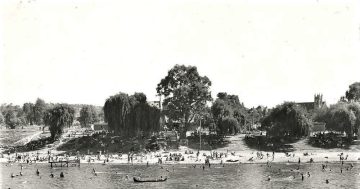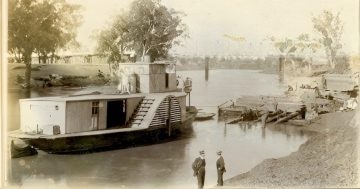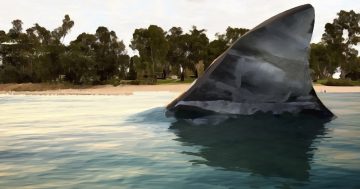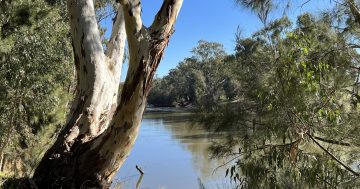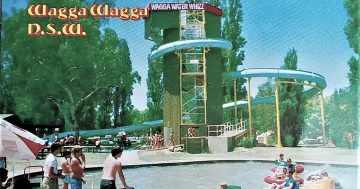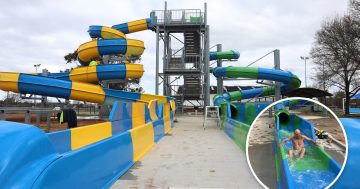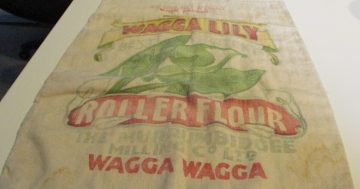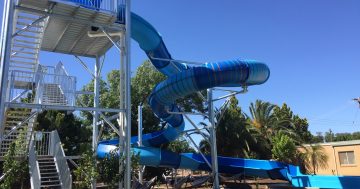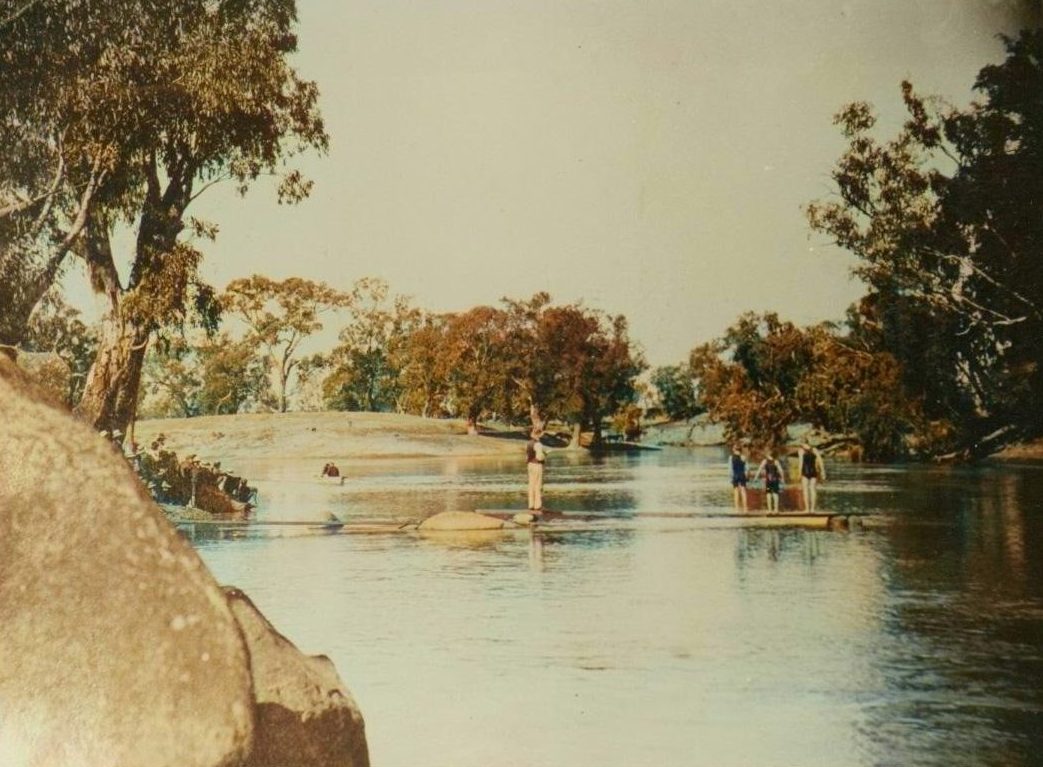
Old swimming baths near the Wagga Bathing Beach, c. 1930. Photo: Museum of the Riverina (Ellis collection).
As summer has really let its presence be felt in December, the Museum of the Riverina is taking us back to the soothing waters of the Murrumbidgee River, to once again see how the earlier residents of Wagga cooled off when the mercury soared.
Swimming in the Murrumbidgee River (and no doubt other waterholes and lagoons throughout the district) had its beginnings in the time of traditional Wiradyuri ownership of the area. From the earliest years of European settlement from the first half of the 19th century, men and boys ventured into the cool waters of the river. They may have been joined on occasions by intrepid girls and women unafraid of public outrage.
The law in these early days was strictly against swimming near public thoroughfares between 6 am and 8 pm, so secluded spots were sought after by those wishing to swim during the heat of the day.
From as early as 1871, people had begun publicly petitioning for the erection of permanent public baths on the river.
The Wagga Wagga Advertiser and Riverine Reporter of Saturday, 23 December, 1871, carried a letter addressed to the paper’s editor which read:
“SIR,- It is not surprising that no one has yet considered it worth his while to establish a swimming bath in Wagga? Sweltering with heat from morning to night, as we have been during the last week, and are likely to be for the next two or three months, nothing can be more desirable or salutary than frequent bathing. Yet, with a splendid river flowing through the town, there is no place where men can go to swim with any reasonable degree of pleasure or safety, and none where women can venture to bathe at all.
Now, there is a splendid basin of water between Waterview (at the end of Sturt Street) and the Prince of Wales Hotel, which could easily be converted into swimming baths, which should be available for both sexes and at all hours. Since no private capitalist seems inclined to such a speculation, the Municipal Council ought to take the matter into immediate consideration. There would be no difficulty in borrowing a sum of money for the erection of public baths; and once constructed, they could be leased at a profit, and would become a source of revenue to the Corporation.
As a sanitary measure, it is the duty of the Municipal Council to provide public baths; and the sooner they set about it the better, for their own credit and the comfort and welfare of the ratepayers, including Yours truly, BATHER.”
A Wagga Swimming Club was formed and by 1899, they had 150 members and claimed to be the largest in NSW.
By 1900 membership of the club had risen to 250, and a large marquee had been erected for women bathers, while the men had to make do with a hessian stand. The wearing of neck to knee bathers was enforced by law.
In this photo, you can see some boys standing on the pylons in the middle of the river which were part of the old swimming baths in the area behind St. Michael’s Cathedral. These baths were popular with recreational swimmers and were also used for school swimming carnivals.







